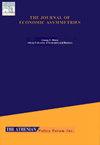Asymmetric relationship between diversification and liquidity creation: Empirical evidence from GCC
Q1 Economics, Econometrics and Finance
引用次数: 0
Abstract
This study examines how bank diversification affects liquidity creation by using the bank level data of GCC countries. We use data from 205 banks in GCC over the period of 2005–2019. To test the hypothesized relationship, we employ the GMM methodological framework. The findings of the study reveal that both income and asset diversification adversely affect the narrow and broad measure of banks' liquidity creation. However, funding diversification positively(negatively) influences the broad(narrow) measure of liquidity creation. The results highlight that bank diversification is a double-edged sword; although it can help in reducing risk, but it also vanishes the banks' ability to create liquidity. However, the in-depth and detailed analyses reveal that the impact is asymmetrical across large, small, well-capitalized, and undercapitalized banks. Furthermore, comparing the normal and crisis periods highlights that banks behave differently in different economic conditions. The results have several implications for the bank managers and decision makers; they must consider the trade-off between liquidity creation and level of diversification. Additionally, the asymmetry in results implies that managers must consider the level/bank's specific characteristics while making such strategic decisions.
多元化与流动性创造的不对称关系:来自海湾合作委员会的经验证据
本研究通过使用海湾合作委员会国家的银行层面数据来检验银行多元化如何影响流动性创造。我们使用了2005-2019年期间海湾合作委员会205家银行的数据。为了检验假设的关系,我们采用了GMM方法框架。研究结果表明,收入和资产多样化对银行流动性创造的狭义和广义指标都有不利影响。然而,资金多样化正(负)影响流动性创造的广义(狭义)措施。结果表明,银行多元化经营是一把双刃剑;尽管这有助于降低风险,但它也使银行丧失了创造流动性的能力。然而,深入和详细的分析表明,对大型银行、小型银行、资本充足银行和资本不足银行的影响是不对称的。此外,对正常时期和危机时期的比较突出表明,银行在不同的经济条件下表现不同。研究结果对银行管理者和决策者有几点启示;他们必须考虑流动性创造与多样化水平之间的权衡。此外,结果的不对称意味着管理者在做出此类战略决策时必须考虑级别/银行的具体特征。
本文章由计算机程序翻译,如有差异,请以英文原文为准。
求助全文
约1分钟内获得全文
求助全文
来源期刊

Journal of Economic Asymmetries
Economics, Econometrics and Finance-Economics, Econometrics and Finance (all)
CiteScore
4.80
自引率
0.00%
发文量
42
审稿时长
50 days
 求助内容:
求助内容: 应助结果提醒方式:
应助结果提醒方式:


